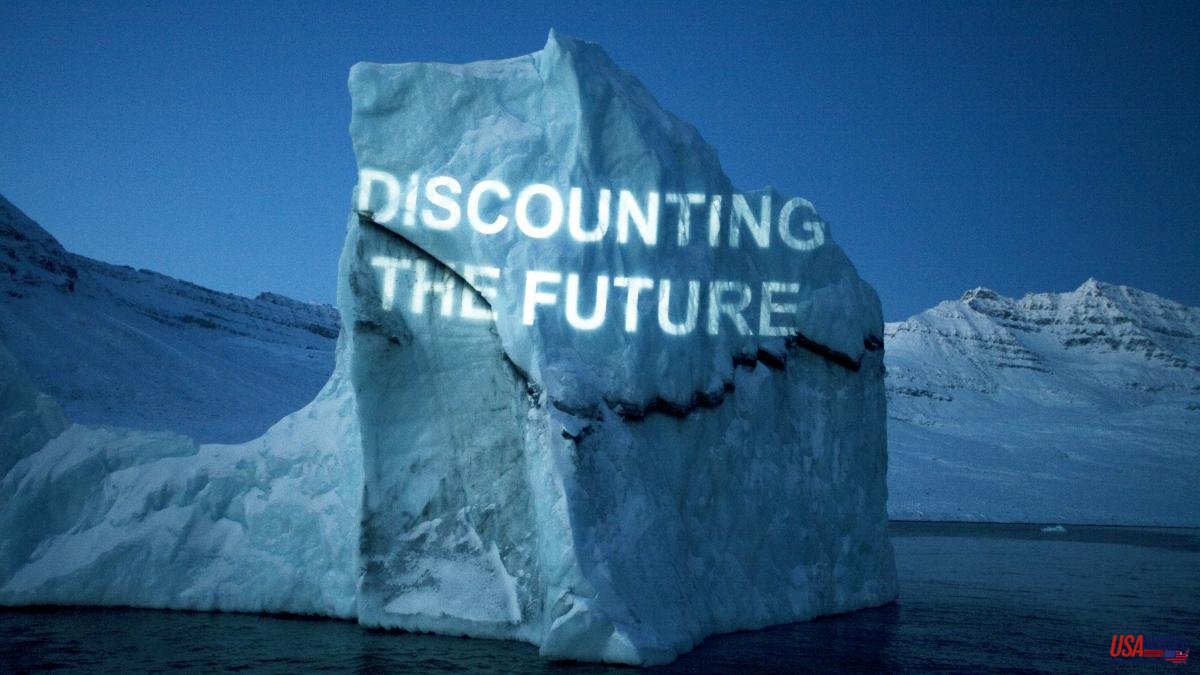"All art should be climate art, otherwise in thirty years all art will be about pain." The declaration of intent of a climate conference in the United States in 2019 is a reality in 2022, both in terms of evidence of climate and its impact on the art world: right now hundreds of creators from all over the world planet give shape to this concern, while museums and exhibition centers endlessly program exhibitions on the subject, currently in London the traditional great summer exhibition of the Royal Academy is simply titled Climate; in Paris, at the Palais de Tokyo, Réclamer la Terre, while Climate in crisis: Environmental change in indigenous Americas is presented at the Brooklyn museum in New York; critical studies on climate art as a discipline have even appeared in various universities.
Yes, art has been littered with terms like Holocene, Anthropocene, Novacene, Aerocene, Technocene, Symbiocene and other Enes, because, as Climate curator Alison Wilding pointed out, "it's the big all-encompassing theme." It covers everything, indeed, but the objective is that this art of the climate be, forgive the redundancy, effective, that is, that it contribute if not to its solution, yes to the diffusion of this emergency, and that it achieves that is another question. The so-called climate art is directly connected to Land Art, a trend that uses nature as a setting and material for its creations, but its ambition goes much further and so do its media, including installations, video, photography and projects directly linked to activism. and to the community.
Although it took its first steps in the 1960s, it has been in this century that it has become enthroned as the "great trend in art", as established last year by the influential magazine Artland, and for a dozen years Over the years, climate art has permeated from festivals to fairs and has given rise to a body of theory already present on Wikipedia, which says a lot about its generalization: what is climate art? Does it make sense or, to put it another way, does it have the ability to influence viewers and their attitudes?
On the occasion of the celebration of the Climate Summit in Paris in 2015, the group Artists 4 Paris Climate 2015 was created, based on the assumption that "visual artists have the power to create metaphors that can open the eyes of public opinion through of experiences and emotions. This is what art can do for science.”
A very clear example of what "art can do for science" was the project 1.5º C Changes Everything, carried out by the Prado Museum and the WWF, the World Wide Fund for Nature, in December 2019 coinciding with the celebration of the Climate Summit in Madrid. The objective was to warn about what the planet would be like if its temperature increased by only 1.5 degrees, the turning point established by scientists to avoid unforeseeable catastrophic consequences.
For this purpose, four famous works were selected, Felipe IV on horseback by Velázquez, Children on the beach by Joaquín Sorolla, The passage of the Styx lagoon by Patinir, and The parasol by Goya, and a photographic montage was made to show how Those 1.5 degrees would have affected more: a totally dry lagoon, the beach full of dead fish, the Parasol couple in a refugee camp and Felipe IV and his horse almost swallowed by the waters of a flood.
The campaign was very well resolved from a graphic and emotional point of view, which is what is aspired to. In 2015, also on the occasion of the Paris summit, two behavioral scholars, Laura Kim Sommer and Christian A. Klöckner, analyzed the reactions of visitors to the exhibition on climate change produced for the occasion, with the aim of verifying whether the exposed works induced changes in the behaviors.
Their results, published in a seminal study in the journal Psychology of Aesthetics, Creativity and the Arts, identified four categories: 1. Works of "comforting utopias," envisioning a better future. They generated little reflection and awareness. 2. Works of the "defiant dystopia" provoke negative emotions but not a reflection on our role in them. 3. Works of the “mediocre mythology”, which neither provoke impact nor move to reflection, and 4. Works of the “incredible solution”, works on nature that propose solutions to environmental problems, leave the visitor hopeful and aware of his own role.
Because there is a risk of turning climatic art into a kind of children's festival, or mere immersive reality, or, at the other extreme, into a discourse of data and figures incomprehensible to the general public. As Guardian critic Jonathan Jones noted with British wryness of the current Royal Academy exhibition, "The situation on Earth is dire, but that doesn't mean artists necessarily have a say in it." Other critics have highlighted the paradox that some of these installations generate a significant carbon footprint in an art system that is characterized by fairs, biennials and activities in different parts of the world, with all that this implies in travel and other ecological bills. For this reason, the Gallery Climate Coalition initiative stands out, which tries to reduce the environmental impact of the art industry; Thus, it offers members a means to calculate their emissions and asks them to commit to reducing at least 50% by 2030.
What can art do for the climate? A question raised only a couple of months ago by art historian Zoë Lescaze in The New York Times. Perhaps the most interesting answer, and the one that would do the most for the planet, would be to reduce its own emissions. One example she gave was the painter Gary Hume, who asked his gallery owner to investigate the emissions associated with sending his works from London to New York for a show; the result was that shipping reduced them by 96 percent relative to flying. Another example, more advanced in her time, was that of the Catalan artist Eulàlia Valldosera, who did not go to the Biennial of Antarctica in 2017, but rather sent her work, some audio files, for the meeting.
Possibly for all this, the current trend is towards projects that materialize in specific actions, and to work with nearby communities, in such a way that they can have a direct impact on them.













